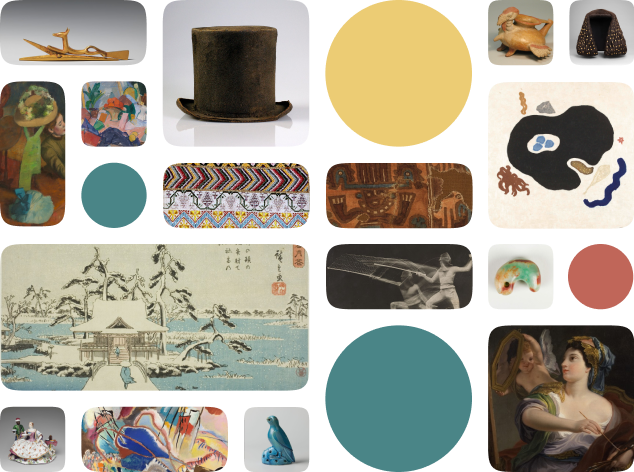Life Death Figure
Creator Name
Cultural Context
Date
Source
About the work
One side of this stone figure has flowing hair and a stone-lipped smile. The other, hollow eyes and a skeletal grin. The sculpture demonstrates the duality of Aztec cosmovision, the belief system of the Nahua-speaking people ruled by the Mexica in the Aztec empire.
Artists hewed the small figure from hard volcanic stone. Based on the figure’s headband and two tufts of hair, scholars once speculated that it represents Xiutecuhtli, the god of fire, or Tonacatecuhtli, the creator. Now, scholars think the tufts evoke the two temples of Tenochtitlan’s Plaza Mayor, dedicated to the war-like Huitzilopochtli, and the rain god Tlaloc.
Nahua peoples believed that teotl, a sacred, self-regenerating life force, imbues all of creation through the constant cycling of opposites: wet/dry, masculine/feminine, hot/cold, and death/life. The sculpture reminds viewers of this eternal dualism: death constantly springing from life, life from death.
Artists hewed the small figure from hard volcanic stone. Based on the figure’s headband and two tufts of hair, scholars once speculated that it represents Xiutecuhtli, the god of fire, or Tonacatecuhtli, the creator. Now, scholars think the tufts evoke the two temples of Tenochtitlan’s Plaza Mayor, dedicated to the war-like Huitzilopochtli, and the rain god Tlaloc.
Nahua peoples believed that teotl, a sacred, self-regenerating life force, imbues all of creation through the constant cycling of opposites: wet/dry, masculine/feminine, hot/cold, and death/life. The sculpture reminds viewers of this eternal dualism: death constantly springing from life, life from death.
Brooklyn Museum Object Description
Aztec stone figure. The circles on the headdress represent fire and the two horn-like projection on top of the head help identify the figure as Xiuhtecuhtli, the Lord of Fire. This deity was associated with fire and life as well as with the household hearth where food was prepared and household rituals were performed.The left side of the head represents life; the right side symbolizes death. This is an unusual representation of this deity. The body is a simple abstract form. Condition: Right arm has repaired crack. Conservation observed damage to nose in 1984; tip had been broken off and lost; area was tinted with watercolors to make it less apparent. Condition generally good. Overall surface wear. Recessed brass hole ...
Work details
"--" = no data available
Title
Creator
Worktype
Cultural Context
Material
Dimensions
Technique
--
Language
--
Date
Provenance
Style Period
--
Rights
Inscription
--
Location
Source
Subjects
Topic
Curationist Metadata Contributors
All Works in Curationist’s archives can be reproduced and used freely. How to attribute this Work:
Unknown, Life Death Figure, 1200-1521. Brooklyn Museum. With one side representing life and one death, this stone figure demonstrates the duality integral to Aztec cosmovision. Creative Commons Attribution.
Help us improve this content!
Let our archivists know if you have something to add.
Save this work.
Start an account to add this work to your personal curated collection.
